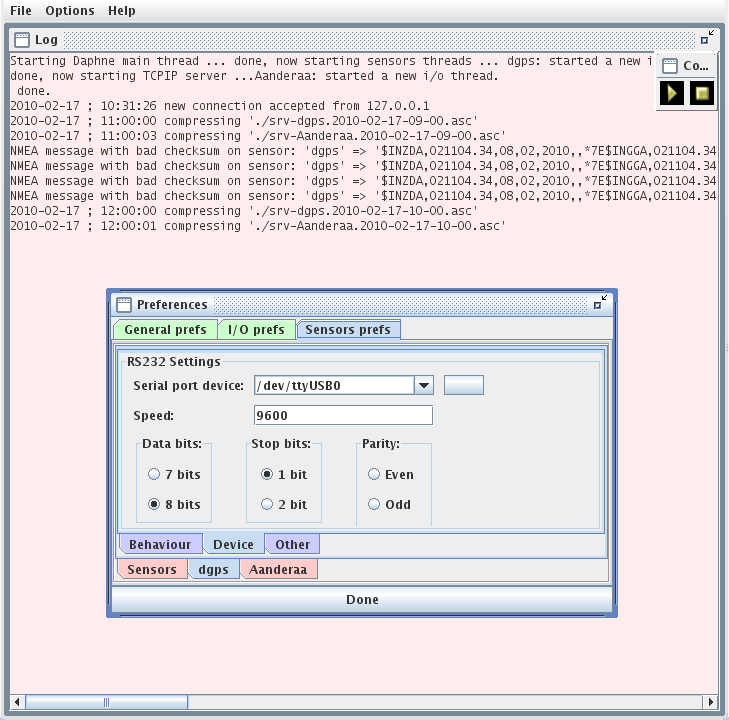Daphne
Daphne
AUTHOR: Giuseppe Stanghellini.
Abstract
Daphne is a software able to collect data from several RS-232 ports, to store them in ASCII files with the proper timestamps and the positionings (received from a connected GPS when available) and to send them on demand to remote Daphne clients on the internet and/or to UDP listening clients as well as to FTP servers.
The clients have the possibility to store data locally whenever required.
The system is configurable through a graphical user interface (GUI) or by means of a properly formatted textual file.
Daphne is used, amongst other installations, on R/V Urania to collect meteorological data in real time, the collected data is stored at ISMAR data center, last data received are shown in real time here.
Description
Daphne is a program able to control several sensors connected through RS232 interfaces. Daphne has a dual personality, in fact can act as a server or as a client, aiming at a flexible and robust way to distribute and optionally duplicate acquired data over TCP/IP networks.
When multiple sensors are connected to a single machine, it will become very useful to integrate sensor data coming from different sensors in a sychronized and programmatically way, daphne permit this through the configuration of interconnected sensors, where is it possible to select which sensor is connected to which sensor. Typically this is used to integrate data coming from GPS sensors or time-accurate sensors to actual environmental data coming from meteorogical instruments.
The positioning data were supposed to be provided through a standard NMEA GPS interface, in particular the well known GGA, GLL and ZDA sentences, or a combination of them, or, at least, the GGA.
Further work
A new, smaller, only textual (without user interface) and more optimized version of Daphne, called Skopeo, is on work, particularly useful for installations on very limited hardware (like Raspberry Pi), unleashing installations on low-energy and/or photovoltaic supplied places, like buoys or marine platforms.
The software can be obtained by submitting a request to Giuseppe Stanghellini at ISMAR - CNR.
A technical report of one of the early versions of the package can be downloaded here.

